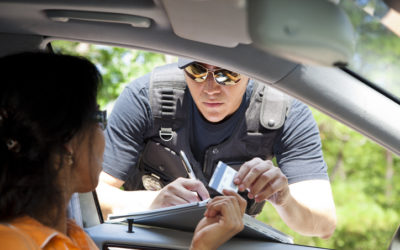Oklahoma Traffic Laws You May Not Know
Did you know that Oklahoma drivers are some of the best in the country? With a rank of 40 out of fifty (rating worst to best), it looks like Oklahomans are part of the top ten when it comes to drivers in the United States!
But like any other state, Oklahoma has a unique set of traffic laws that both residents and visitors must abide by. With so many laws and changing regulations, it’s sometimes hard to keep up with what’s current.
So, whether you’re taking your driver’s test for the first time or want to brush up on the rules of the road, here are seven traffic laws you may have forgotten existed.
Law #1: Bicyclists Have the Same Rights as Motorists
This one might be a no-brainer: Sharing the road with other motorists is one of the most common laws found in most states. But it’s a good thing to remind those behind the wheel that motorcyclists, bicyclists, and even rickshaws have the same rights as motorists do when driving. This means that committing unlawful actions, like passing unsafely to get around the other person, could result in a ticket.
Law #2: Busses Have to Stop Before Crossing a Railroad Track
When you approach a railroad track, it’s second-nature to drive over the track without looking both ways. This is probably because most drivers rely on the crossing signals to tell them if a train is approaching.
But the rule is a little different for bus drivers in Oklahoma: All school busses must first stop before crossing the tracks, even if the crossing signals don’t indicate there’s a train coming.
The state traffic law (47 O.S. 11-702) says that any school bus driver must do these steps at any railroad crossing:
- Stops within 50 feet of and not closer than 15 feet of the tracks
- Listen and look in each direction for an approaching train
- Be positive that no train is approaching before continuing across
This ensures the safety of the passengers, which are typically children. So, if you happen to be behind a school bus before crossing a railroad, have a little extra patience for the driver in front of you!
Law #3: Arm Signals Can Be Used to Signify Turning
It’s illegal to make a turn without signaling—but the good news is that even if your blinker lights are out, you can legally signal the turn with your arm!

Oklahoma law says that you should signal your turn within 100 feet or ⅓ of a block before your turn arrives. If you plan to turn without your blinker, then extend your arm and hand straight out for a left turn or out and upward for a right turn. You can also signal when you’re stopping and slowing down by pointing your arm and hand downwards.
Law #4: Major Interstates Have an Increased Speed Limit of 75 MPH
In most cases, you’ll find that Oklahoma freeways and highways have a maximum speed limit between 55 and 70 miles per hour (MPH). But in 2020, state officials shared that there will be some upcoming changes to the speed limit on rural highways and interstates.

The Oklahoma Transportation Commission approved six stretches of road on Interstates 35 and 40 to increase the speed limits from 70 to 75 MPH. Lots of factors were taken into consideration, like sight distance, traffic flows, and collision history.
Keep in mind that until the new speed limit signs replace the old ones, you still have to abide by the 70 MPH law for the time being.
Law #5: Texting and Driving Is Illegal
Oklahoma has rigorous cell phone usage and driving laws. The state passed a bill that made it illegal to text and drive, with the law explicitly stating that you cannot use “a handheld electronic communication device to manually compose, send or read an electronic text message.”
Interestingly, it’s not entirely illegal to use handheld devices while driving, which means you can legally answer the phone or make phone calls while behind the wheel.
However, it’s important to note that the use of handheld phones are illegal if you’re a bus driver or still have a learner’s permit or intermediate license.
Law #6: Front-Seat Passengers Must Always Wear a Seatbelt
Oklahoma is strict about its seatbelt laws, but only for front-seat passengers. Sitting in the front seat without restraints is considered a primary offense, which means an officer has reason to pull you over and ticket you if you’re caught without wearing one.
However, the back seat is a little different. While most children have to wear a seatbelt, there is no specific law that says you must buckle up if you are older than eight years old. Oklahoma is currently the only state in the nation without a law requiring all children over eight to buckle up in the backseat.
Law #7: You Must Abide by the Left-Lane Law
Most everybody is familiar with this sign on the highway that says: “Slower Traffic Keep To Right.” This sign is probably why most freeway drivers colloquially refer to the left lane as the “fast lane.”
But as of 2017, Oklahoma officials have enacted a law that changed the way drivers use the left lane. Statute 47-11-309 says that on a two-lane divided highway, drivers can only use the left lane for passing or when road conditions and traffic make it necessary to do so.
Conclusion
Like any other state, Oklahoma has its own set of unique traffic rules that must be followed to avoid a ticket, such as:
- Bicyclists have the same rights as motorists
- School busses must stop before crossing a railroad track
- Arm signals can be used instead of blinkers
- Significant interstates are increasing its speed limits
- Texting and driving is a primary offense
- Front-seat passengers must wear seat belts
- You must use the left lane for passing only
So before you hit the road again—or go take that driver’s test—it’s a good idea to refresh your memory on these specific Oklahoma defensive driving laws.
Other posts you might enjoy:
We Believe in Nashville
Our thoughts are with all those in Nashville and across the great state of Tennessee affected by the recent tornadoes. The safety of our DriveSafe Online family, customers and partners is our primary concern. Tennessee Governor Bill Lee called for residents to stay...
Child Passenger Safety Regulations: A State-By-State Guide
Your State-By-State Guide to Child Passenger Safety Regulations Child passenger safety regulations are in place because a leading cause of death for children, one in every four, is driving-related accidents. Each one of these deaths is a terrible tragedy, but you may...
Will A Speeding Ticket Affect My Insurance?
By Patrick Mileham DriveSafe Online Contributing Writer Speeding tickets are part of your driving record so they may increase the amount you pay for insurance. That’s the bad news. The good news is there are several factors that must occur to actually trigger a rate...
Your Road to Savings

Patrick M. is Editorial Director for the always expanding DriveSafe Online library of courses. With over two decades of experience developing award-winning training, he now focuses on innovating online driver safety training. Pulling from his background in journalism, he steers the wheel behind the creation of top-tier content that promotes a better journey—whether on the digital highway of learning or the real roads we travel every day.


